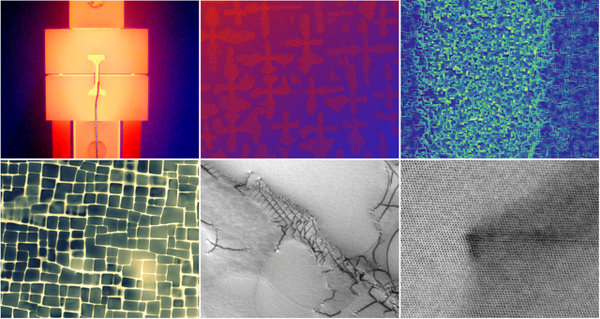
MPG Group “High-Temperature Materials”
High temperature materials are used for critical components in gas turbines for power plants and aero engines, chemical/metallurgical plants and motors for ships and cars.
Critical components operate in the creep range, where they have to withstand mechanical loads at elevated temperatures. Creep is characterized by a continuous evolution of strain with time and a strong dependence of creep rate on stress and temperature. It is well known that creep (as well as other high temperature mechanical properties) strongly depends on the microstructure of the material. Most importantly, under high temperature creep conditions microstructures evolve: atoms segregate to interfaces, new phases form, precipitates and grains coarsen and dislocation substructures evolve. Coupled elementary microstructural processes govern creep of high temperature materials, which typically have non-equilibrium microstructures which evolve during high temperature service. The availability of advanced high-resolution characterization tools (like in-situ TEM, in-situ SEM, HR TEM and 3D APT) allows to tackle open questions which could not be answered in the past. This is the background of the research activities in MPIE’s high temperature materials group, which has two main scientific objectives: First, we use advanced mechanical and microstructural characterization methods to identify new elementary processes which govern high temperature strength. Second, we use a mechanism-based approach to assist in the development of new high temperature materials and to improve processing technologies by studying microstructural key events that occur during casting, thermo mechanical heat treatments.